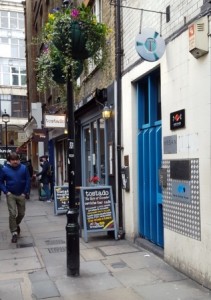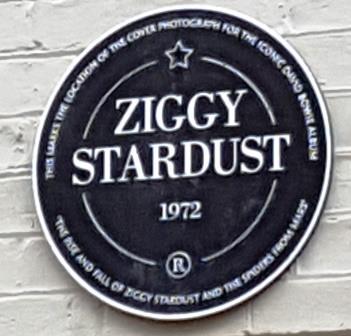The media last week was dominated by the sad death of David Bowie. Television specials and special printed tributes were ubiquitous, packed with quotations from figures from all walks of life — not only musicians and artists but the most un-Bowie-like people, such as politicians like David Cameron and Nicola Sturgeon (ironic, given that one of the very few public comments Bowie made during his final illness was to urge Scots to vote ‘no’ to independence).
The release of his last album only two days before his death heightened the shock many felt at the news. This was perhaps all the more profound because of his influence on the tail end of the baby-boomers. This is the generation that’s slightly younger than Bowie, in their mid to late fifties and early sixties — and hence likely to be at the high point of their careers. These include people likely to be in positions of power in the arts and media establishments and to thank Bowie for . They’re likely to thank Bowie for bringing a sense of subversion and his message of individuality to their formative years.
Now he’s gone — and by natural causes too — everyone who remembers him in his prime has a reminder of their own mortality.

I’m too young to remember much of Bowie in the 70s — just a few catchy singles but definitely nothing of Ziggy Stardust.
It was Ashes to Ashes that made the first significant impression on me. I can still listen to the song over and over again. I love its its uniquely strange sound (especially the grunting monster yells on the album version) but listening to it again, it’s amazing how much of a template the rhythmic elements in the backing track became a template for so much eighties music (listen to the funk bass and the choppy guitar sound).
I did think the video (with all the nascent New Romantics as extras) was mostly a load of pretentious bollocks it was still quite a moving experience to see the famous Pierrot clown costume in the David Bowie Is exhibition at the V&A in 2013. I wrote about my thoughts on Bowie and the exhibition at the time in this post especially his influence countering homogeneity.
In retrospect the fact that the exhibition was staged while Bowie was still alive showed how indisputable his influence had been — even before the inevitable posthumous reassessment.
While Bowie has been mourned and celebrated worldwide, he emerged from London at the turn of the sixties as a completely original talent — typical of the eccentric and unconventional type that England has the indisputable knack of creating.
It’s been plausibly argued, for example in a recent London Evening Standard article, that the creative arts industry is the UK’s biggest industry sector (if you deduct the taxpayers’ bailout of the financial industry which is officially first). And while Bowie was a product of this uniquely British creative culture, he’s certainly done a lot to perpetuate its continuity, (Although it’s been pointed out that Bowie and Alan Rickman, who sadly died a week after Bowie, were both products of a socially upwardly mobile culture that may have already begun to recede).
On a similar theme of post-war British upward mobility, I read that Major Tom, Bowie’s persona in Space Oddity, was inspired by a poster he saw as a child in Bromley for a music hall performance by a Major Tom. This turned out to be Tom Major-Ball, the father of another high-achiever from Brixton, future Prime-Minister John Major.
With its themes of isolation, disconnection and remotely observing the world while also being the centre of its attention, Space Oddity can be seen as more than a topical song that was cleverly timed to coincide with the Apollo moon landings. It can be interpreted a prophetic analogy of the journey into the orbit of celebrity stardom that Bowie had been set on trying to achieve for several years while working packing boxes and in other dead-end jobs in 60’s Soho.
David Bowie’s wider influence on modern culture was so significant that he must have the rare distinction of special tributes in the likes of OK! and Hello magazines as well as the very rare honour of a two page (rather than the standard one page) obituary in this week’s Economist (note the respectful reference to Mr Bowie.
The proof was in the playing. Mr Bowie grew up as David Jones, a sharp-toothed kid from dull suburban Bromley whose parents held no aspirations for him. Through a talent born of yearning he had transformed himself into Ziggy Stardust: extravagant, flawed and sexually polymorphous, tottering on platform shoes and hiding behind a mask of paint…Mr Bowie had taken a while to attract attention. Stuck in 1960s London, he picked up a saxophone and considered jazz, then flitted between bands; he moved from mod to Buddhist, from rocker to folk artist, hanging around London’s Soho with its sex shops and music clubs, exploring sexual ambiguity. Despite the success of “Space Oddity” his early albums drew little attention. It was only with the fifth, “The Rise and Fall of Ziggy Stardust and the Spiders from Mars”, (1972) that millions of teenagers in semi-detached houses just like the one back in Bromley took him to their hearts and turntables.
As the article points out, what’s not been emphasised in most of the coverage of Bowie’s profound impact on 70’s culture (in music, fashion and, as it’s being argued in defining attitudes towards gender and sexuality), is that Bowie was far from an overnight success.
Ironically, for an artist who’s credited with revolutionising many genres, David Bowie (or at first David Jones) attempted to break into the music business for over five years before achieving a breakthrough.
His first single was released in 1964 and an album (which failed to chart at all) in 1967. The first chapter of the David Bowie Is book (which must be the definitive publication for Bowie fans with its vast range of photographs) relates how David Jones (and then Bowie) relentlessly tried to break through into the entertainment industry, following trends from Mods to psychedelia, and not just as a musician. He had a manager, Ken Pitt, from 1966 onwards who advertised Bowie as an actor in casting publications. Of course Bowie did follow an acting career later but it’s doubtful if he’d have diversified into a successful musical from an acting background (Kylie Minogue is probably the exception that proves the rule).
The first section of the David Bowie Is exhibition curated many exhibits from this long period of failure – and it’s telling that David Bowie preserved these artefacts as carefully as he kept the items from his more successful eras. They were placed at the start of the exhibition, perhaps to emphasise the huge but thankless efforts he was making while many other artists achieved instant success.
So the artist elevated by the cultural establishment now as a figure who is said to have changed the world with his innovative genius was almost completely ignored by the music and other creative industries of the 1960s. It’s only due to Bowie’s tenacity and belief in himself that he persisted and was very belatedly given the stage and exposure for his talent.

And although it could be argued, at least retrospectively, that Bowie was a product of the disruptions in social conventions of the time, there was no-one in the music business on the lookout for looking for a flamboyant, gender-blurring singer who’d constantly reinvent an image as soon as it became popular. Even a couple of years after its release in 1969 Space Oddity could have been viewed as a one-hit wonder. Life on Mars, Starman and Ziggy Stardust didn’t appear until the early seventies.
In some ways, Bowie’s career is great testament to the value of self-belief and perseverance. However, during this period he was disillusioned enough to announce in The Ship on Wardour Street, that he was taking a sabbatical from the London music scene.

He said his intention was to become a Buddhist monk. Fortunately he didn’t and he eventually worked on mime, dance and experimental art, such as the Beckenham Arts Lab. Such influences may have given him a more interesting image as an artist when he eventually became established as a singer but he could equally followed a non-musical direction.
Bowie had countless rejections over many years and the only person who can really take credit for David Bowie’s body of work and artistic legacy is David Bowie himself. No record company or manager was looking someone to fill a Bowie-shaped gap in their roster of artists.

Bowie is another example of an immensely talented artist who went from being virtually the only person who believed in himself at the outset to an undisputed, global cultural figure. And there are many examples of similar artists, famously The Beatles, and writers, most notably J.K.Rowling who were passed over by record companies or editors because they didn’t offer what was currently popular in the market.
Such examples are often used of how endless persistence pays off. This is true in the case of those who eventually break through, but it’s impossible to know how many potential Bowies fail to achieve recognition, no matter how hard they try.
It’s easy to tell creative people to be persistent because it’s easier to rationalise a lack of success due to an according lack of perseverance rather than lack of talent or (perhaps worse) a lack of appetite for risk or ambitions or just plain lack of insight by the cultural gatekeepers.
Perhaps this long period of toiling in the shadows is why Bowie was always regarded by those who knew him as polite, down-to-earth and very humble. Those who’ve lavishly praised him need to thank his persistence for the enormous influence that stemmed from it. As is said in a paragraph from the book of the V&A exhibition:
‘David Jones grew up in 1950s London dreaming of being a successful entertainer. As David Bowie he tried, tried very hard, and became a world-famous performer. In the process he helped establish a key part of Western twenty-first century liberal belief: that anybody should be allowed to be they want to be. Self before duty, with duty a choice. He did not invent the idea, but he did promote it to a huge audience. The marketing worked and the London of today, ethnically diverse, culturally open and relatively tolerant, is an ongoing testament to that belief. In the remaining years of this century there are plenty of groups for whom such a culture in anathema. It will be interesting to see how this journey, which started in Brixton, London SW9, continues to unfold’
Geoffrey Marsh, Exhibition Curator in David Bowie Is catalogue.

